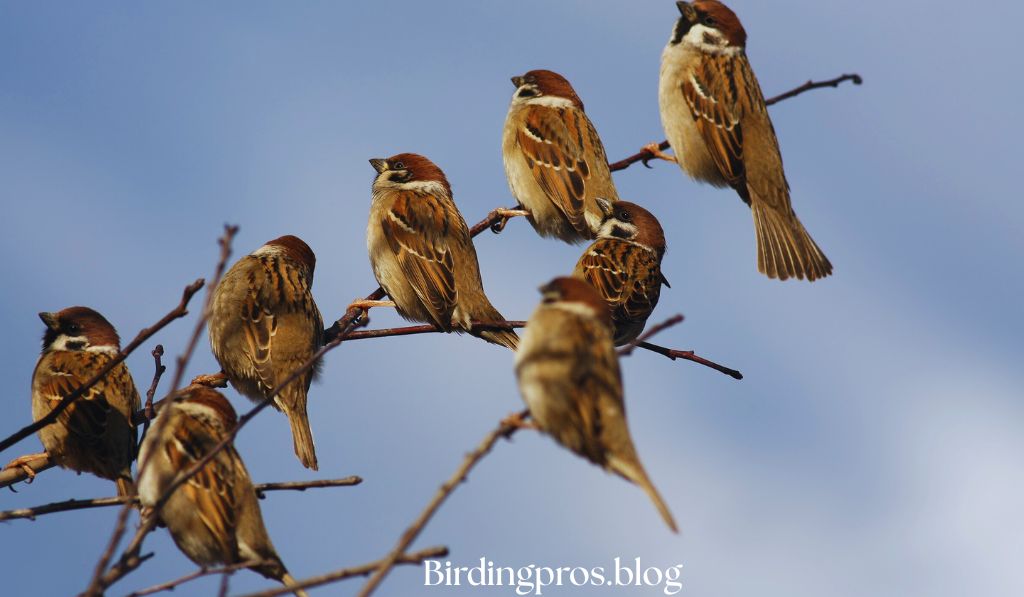Bird-friendly gardens transform your outdoors place right into a colourful environment while contributing to community fowl conservation.
This complete guide will display you exactly how to layout, plant, and preserve a bird-friendly garden that attracts several avian site visitors in the course of the one year.
Table of Contents
ToggleIntroduction to Bird-Friendly Gardens

A bird-friendly garden gives critical assets for nearby and migratory birds. With herbal habitats shrinking because of development, domestic gardens have ended up crucial refuges for chook populations.
What Makes a Garden Bird-Friendly?
The essence of a bird-friendly garden lies in its potential to meet the crucial wishes of birds.
These gardens mimic natural ecosystems with the aid of providing food, water, safe haven, and nesting web web sites—the 4 pillars of chook habitat.
When well designed, a bird-friendly garden can assist dozens of fowl species in the direction of the seasons.
Benefits of Creating a Bird-Friendly Garden
Developing a bird-friendly garden offers numerous blessings for every bird and human beings. Natural pest manipulation is one wonderful benefit, as birds devour bugs that would in any other case harm your flora.
Your lawn might also enjoy advanced pollination as birds bypass from flower to flower. For proprietors, a chook-pleasant garden gives loose entertainment and educational possibilities, specifically for children who can discover about nature firsthand.
Perhaps most importantly, your lawn will make contributions to biodiversity conservation in your close-by region even as supplying you strain bargains and stepping forward highbrow fitness through connection with nature.
Understanding the Needs of Birds
Before designing your bird-friendly garden, it’s important to apprehend what birds require to thrive for your landscape.
Food Sources in Bird-Friendly Gardens
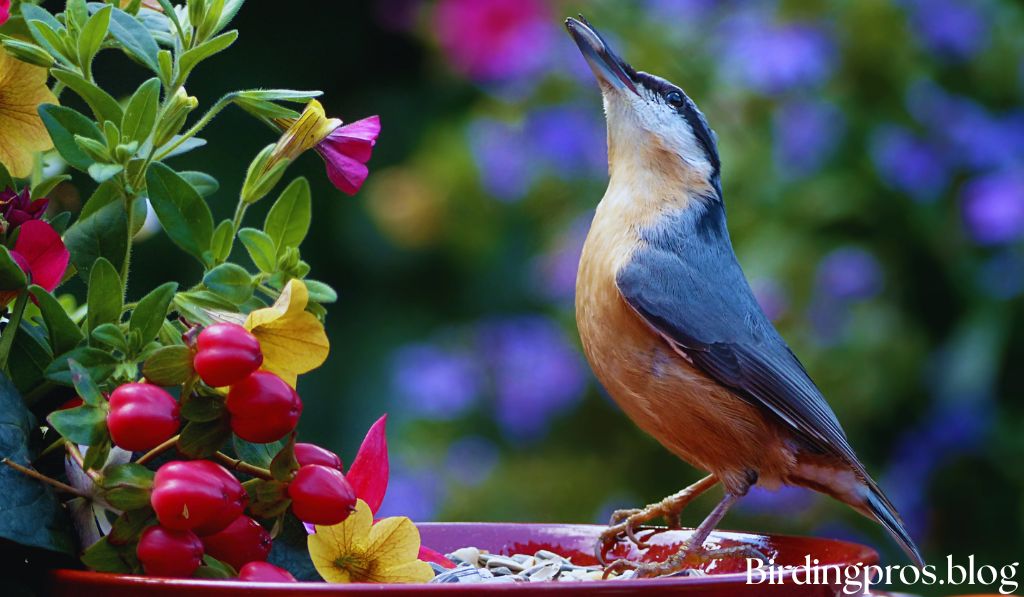
A successful chook-pleasant garden offers numerous food alternatives via both nearby plant life and supplemental feeders.
Native flora provide seeds, berries, nuts, nectar, and attract bugs that birds eat. Sunflowers and coneflowers provide nutritious seeds, whilst elderberries and serviceberries produce fruits many birds love.
Plants like milkweed and goldenrod lure insects, which are vital protein sources, particularly at some stage in the breeding season.
Supplement natural meals with feeders, specially all through wintry climate whilst assets are scarce.
Different feeder kinds enchantment to particular species—tube feeders paintings nicely for finches, at the identical time as platform feeders accommodate large birds.
Water Features for Birds

Water is crucial in any bird-friendly garden, serving a couple of functions beyond hydration. Birds want water for consumption and bathing to preserve the feather situation.
Install bird baths at special heights with water intensity among 1-3 inches. Add rocks as landing spots and clean the bath often to save you sickness transmission.
For extra appeal, bear in mind including a dripper or mister, as shifting water is in particular attractive to birds.
Shelter Requirements
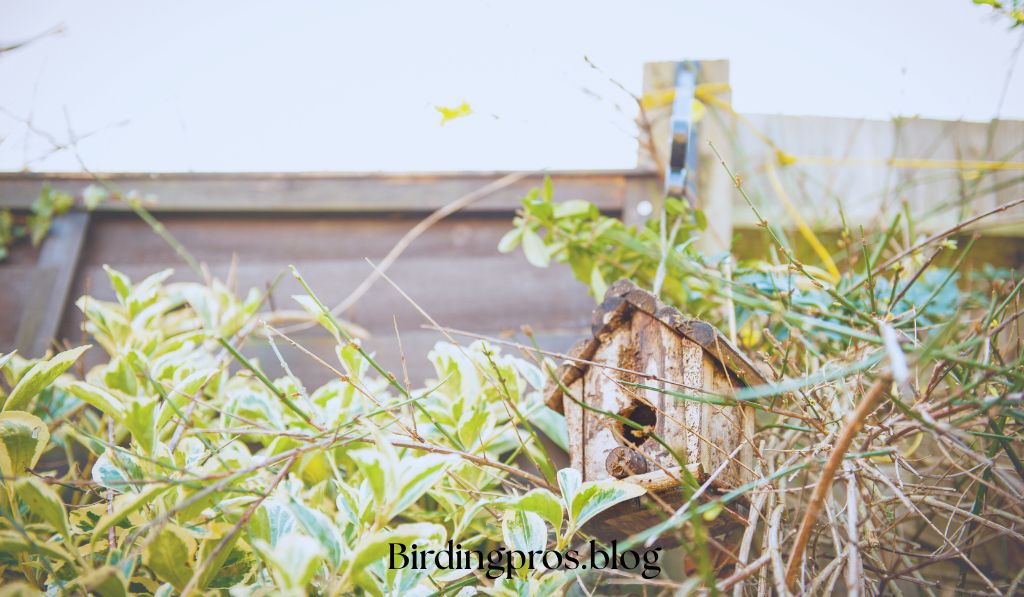
Shelter is vital in a bird-friendly garden for safety from predators and climate extremes. Dense shrubs and evergreen wood provide excellent hiding spots and windbreaks.
Consider maintaining brush piles in discreet corners of your outside and incorporating nearby grasses that create floor-stage cowl for smaller birds.
Nesting Sites for Breeding Birds
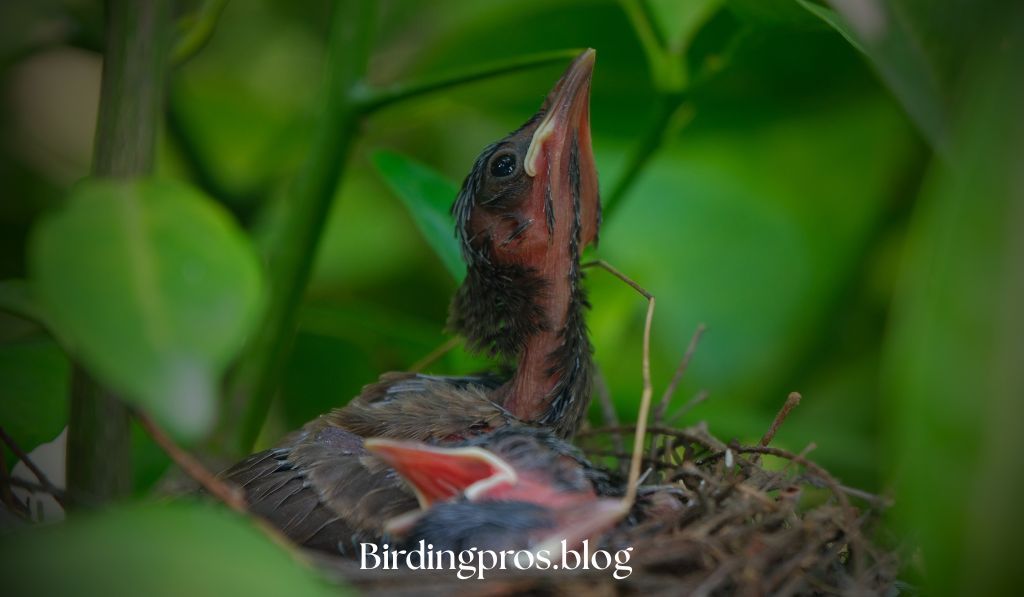
An entire bird-friendly garden gives places for birds to elevate their younger. Trees and shrubs with diverse branch systems accommodate unique nesting options.
Dead tree snags, whilst steady to leave status, provide natural cavities that woodpeckers and chickadees require.
Enhance your bird-friendly garden with nest bins designed for unique species, specially in city areas wherein natural cavities may be constrained.
Nesting shelves established below eaves appeal to robins and phoebes that decide on open-sided structures.
Native Plants for Your Bird-Friendly Garden
Native vegetation shapes the inspiration of any successful bird-friendly garden. They’ve advanced alongside nearby birds, growing herbal relationships that resource avian fitness.
Why Native Plants Matter
In a bird-friendly garden, nearby plants offer sizable blessings over exceptional species. They require less upkeep, water, and fertilizer once set up.
Research indicates local plant life helps up to 30 instances more biodiversity than non-natives, especially in terms of insect lifestyles that bureaucracy the bottom of many meal chains.
Best Trees for Bird-Friendly Gardens
Trees provide a couple of sources on your chook-friendly garden, from nesting sites to meals and refuge.
Oak trees assist over 500 insect species that birds consume, plus produce acorns for masses of birds.
Native cherry trees offer spring fruits that ripen honestly whilst migrating birds want power. Evergreens like pine and spruce offer bird-friendly gardens, particularly crucial throughout winter months.
Shrubs That Attract Birds
The center layer of a bird-friendly garden consists of shrubs that offer food and shelter. Elderberry produces summer culmination that enchantment to over 45 chook species.
Serviceberry offers early season berries even as exceptional food may be scarce. Winterberry displays colourful wintry weather berries that stand out in competition to snow and feed birds all through cold months.
Perennial Plants for Seeds and Nectar
Complete your bird-friendly garden with flowering perennials that provide seeds, nectar, and lure bugs.
Coneflowers produce seeds that persist thru wintry climate, feeding goldfinches and chickadees. Cardinal flower displays brilliant crimson tubular blooms perfectly fashioned for hummingbird beaks.
Garden Design for Wildlife and Birds
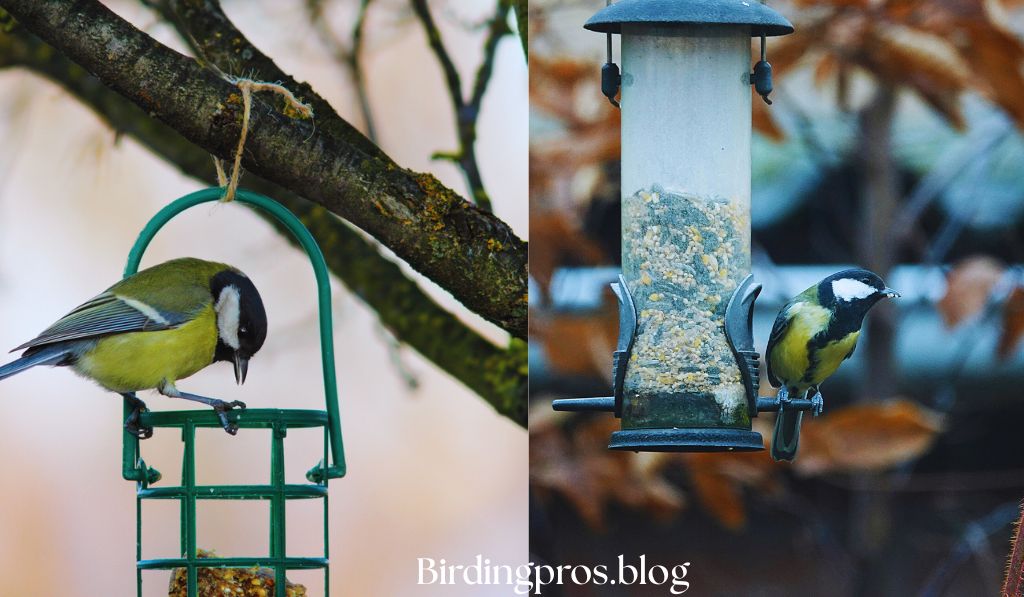
The format of your bird-friendly garden appreciably impacts its effectiveness for attracting and assisting birds.
Layered Vegetation Approach
A well mounted bird-friendly garden mimics herbal habitats through vertical layering. Include tall trees (cover), smaller timber (understory), shrubs, perennials, and ground covers.
This technique creates a couple of niches that exclusive chicken species can make use of, from floor-feeders to canopy-dwellers.
Strategic Placement of Features
The positioning of factors for your bird-friendly garden subjects for each hen safety and your entertainment.
Place feeders near protecting cows but now not too near—approximately 10-12 ft is proper, permitting birds to fast attain protection while preventing ambush predators from hiding too close to.
Position water abilities where they’ll be visible to birds from above and handy from more than one hints. Ensure water resources are close to (but not right now beside) protecting cowl so birds can speedy retreat if threatened.
Creating Safe Spaces
A right bird-friendly garden prioritizes bird safety for the duration of its format. Install baffles on fowl feeding poles to prevent trekking predators.
Plant dense, thorny shrubs round hen baths to discourage cats from hiding close by.
Prevent window collisions with the aid of the usage of making use of window decals or movies that break up reflections.
Position feeders both very close to windows (less than 3 ft) or far away (greater than 30 feet) to lessen collision chances.
Seasonal Considerations
A bird-friendly garden pays for changing seasons and one-of-a-type annoying situations every present to birds.
Include evergreen trees and shrubs for wintry weather safety and plant species with chronic berries and seeds that continue to be available at some stage in meals-scarce wintry weather months.
During migration seasons, hold reliable water assets and offer high-strength meals to help birds refuel on their journeys.
Maintaining a Healthy Environment
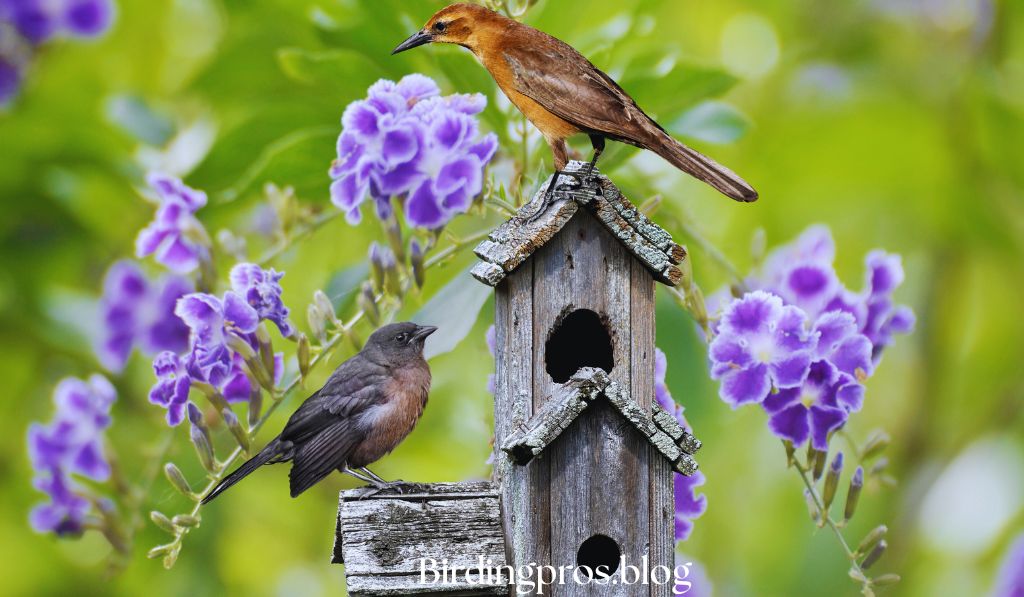
A clearly effective bird-friendly garden calls for protection practices that help ecological stability.
Organic Gardening Practices
Chemicals haven’t any area in a proper bird-friendly garden, as they could damage birds without delay or take away their meals assets.
Learn to tolerate minor insect harm and use bodily boundaries or useful insects in place of chemical solutions.
Support your bird-friendly garden with natural fertilization techniques. Compost lawn waste to create wealthy natural keeps in mind that improves soil whilst feeding vegetation.
Use leaf mulch around plants to suppress weeds, preserve moisture, and slowly launch vitamins.
Managing Garden Debris
How you deal with garden waste impacts your bird-satisfactory garden’s habitat cost. Leave leaf clutter underneath trees and shrubs to create natural foraging regions for ground-feeding birds.
Delay predominant pruning until late wintry weather while birds have completed using berries and seeds from the preceding developing season.
Maintaining Water Features
Water sources to your bird-friendly garden need everyday attention to stay secure and attractive.
Change birds bath water each 1-2 days and clean with a stiff brush weekly to take away algae and droppings that may harbor illness.
During winter, make sure water stays available by using heated chook baths in cold climates or adding a small floating ball to save you complete freezing.
Engaging the Community
Expand the effect of your bird-friendly garden by relating to others and developing connections beyond your own home.
Neighborhood Initiatives
Create a collective bird-friendly garden community via connecting your garden to others inside the community.
Share more nearby flowers with associates and host informal garden excursions to exhibit your hen-friendly features.
Work with buddies inside the course of growing non-stop habitat corridors that assist birds float efficiently via advanced regions.
Even small chicken-friendly garden areas, at the same time as linked, create significant habitat.
Citizen Science Participation
Your bird-friendly garden can make a contribution to medical facts via citizen technological know-how programs.
Participate inside the Great Backyard Bird Count each February to help scientists music iciness chook populations.
Join eBird to record ordinary observations from your garden that emerge as a part of a worldwide database utilized by researchers.
These tasks beautify your understanding of birds even as supplying valuable data for conservation studies.
Troubleshooting Common Issues
Even nicely-designed fowl-satisfactory gardens face challenges that require thoughtful solutions.
Addressing Pest Problems
Manage pests on your bird-friendly garden without compromising its ecological fee.
Encourage herbal predators via habitat range and use physical boundaries like floating row covers to protect inclined vegetation.
For unwanted site visitors like squirrels at feeders, set up baffles or pick out feeders particularly designed to exclude them.
For big animals like deer, don’t forget motion-activated deterrents or choose out vegetation they usually have a tendency to keep away from.
Balancing Aesthetics and Function
A bird-friendly garden can be each lovely and powerful with thoughtful layout. Create viewing areas near bird interest hotspots and encompass paths that allow entry without worrying birds.
Keep greater seen regions like the front yards drastically tidy with defined edges to help friends apprehend your ecological method.
Add informational signage about your fowl-quality garden to teach passersby approximately the cause at the back of your naturalistic fashion.
Conclusion: The Joy of Bird-Friendly Gardening
Creating a bird-friendly garden is a worthwhile journey that evolves through the years. As your plant life matures and phrase spreads through the avian network, you will welcome an developing variety of feathered traffic.
The relationships you build with those wild creatures will deepen your connection to the natural worldwide.
Your chook-friendly lawn contributes to the bigger mosaic of habitat that birds need to live on in our increasingly evolved world.
Whether you have got a small balcony or acres of land, your efforts make a difference for birds and one of a kind natural world.
Begin your chicken-excellent garden nowadays via a way of incorporating only a few key factors: local flowers, water belongings, safe haven alternatives, and nesting sites.
Start small, take a look at the effects, and grade by grade enlarge your efforts. The birds will praise you with their presence, bringing shade, music, and lifestyles to your outdoor space for the duration of the seasons.
FAQs About Creating a Bird-Friendly Garden
What are the important factors of a bird-friendly garden?
A hit bird-first-rate lawn gives four simple elements: meals sources via native vegetation and supplemental feeders; clean water for ingesting and bathing; safe haven from predators and climate; and nesting websites for elevating younger.
How lengthy will it take for birds to discover my hen-excellent garden?
Birds may additionally find out your chook-high-quality lawn inside days of adding key features like feeders or water property. However, building a numerous chook network commonly takes 1-three years as your vegetation matures.
Can I create a bird-friendly garden in a small area?
Absolutely! Even balconies and small patios can become hen-fine lawn spaces with container plants, wall-installation feeders, and compact water capabilities.
How can I preserve cats from searching for birds in my garden?
Protect birds to your bird-pleasant garden via a manner of maintaining puppy cats interior, growing cat-free zones with fencing, and positioning fowl feeders and baths away from hiding spots.
What’s the satisfactory season to start a chicken-pleasant garden?
While spring is famous for beginning a hen-pleasant garden, fall planting often results in higher plant installed order. Winter is right for planning and putting in feeders and chicken baths.
Reference:
- https://extension.umn.edu/news/bring-more-birds-your-home-native-plants
- https://www.fws.gov/story/2021-09/backyard-birds
Related posts
1. Birding in Yellowstone National Park: A Complete Guide
2. Best Birding Lodging in Panama: The Ultimate Guide to Top 10 Destinations
3. The Profound Impact of Climate Change on Birds Populations

